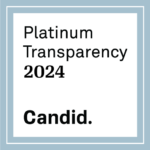Friends of Cancer Research initiated a new research partnership, Digital and Computational Pathology Tool Harmonization, or Digital PATH, Project. The project will identify factors that may contribute to variability in biomarker assessment across computational pathology platforms, propose areas for alignment in the field, and provide insights for shaping regulatory processes.
The Digital PATH Project is guided by extensive collaboration and aims to enhance the use of these computational digital pathology platforms and improve patient care.
“As artificial intelligence tools increasingly become part of healthcare, their use in digital and computational pathology open remarkable opportunities for enhanced diagnostic insights,” Jeff Allen, president & CEO of Friends, said in a statement. “This new collaborative research partnership will help inform future policies toward optimal regulation and utilization of these advanced technologies.”
During this research partnership, human epidermal growth factor receptor 2, or HER2, computational pathology algorithm developers will collect and analyze data to assess concordance of HER2 measurement from breast cancer samples across platforms and identify factors contributing to variability.
HER2 is a biomarker with opportunities in breast cancer treatment and expanded relevance in other cancer types with the emergence of antibody drug conjugates. Samples are being provided by collaborators at the Department of Pathology, ZAS Hospitals in Antwerp, Belgium.
“What is currently largely unknown and crucial for incorporation of AI-tools in our trial- and daily-practices is the comparability and performance of different AI-platforms on the same set of slides,” Roberto Salgado, a breast pathologist at ZAS Hospitals, said in a statement. “This study will provide important insights to the community, including regulatory bodies and industry, about the capabilities of AI tools and their application in patient care.
The Digital PATH Project will evaluate the implementation of several proposals included in a 2023 white paper.
